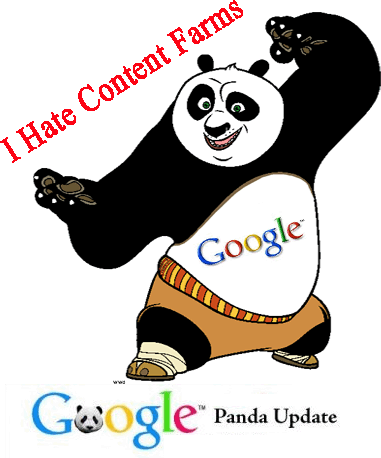Google is periodically changing its approach on search engine optimization. Ever since its launch, it has consistently improved how websites are ranked. Most bloggers must have been puzzled about what happens to SEO after Panda. Undeniably, a vast majority sought advice from web professionals on how to go about it. Not a bad idea by any standards, but not when there is a free article dedicated to ensuring that the search quality of your sites is maintained as per the Panda standards. For others, you may have realized the devastating effect Google Panda has had on your sites’ ranking as a result of low quality content. So, how do you start rebuilding? How do you make your sites Panda friendly? Keep reading.
Begin With Great Content.
Content, content and more quality content is more useful in SEO after Panda than it was before its introduction by Google. Too bad for you if there were other techniques that managed to keep your websites’ ranked highly other than generating quality content. SEO after Panda requires valuable, benefit driven content, active and consistent article posting, use of images and custom photography and videos, keyword research before writing content and submitting the site to various niche directories.
Off-Page Social Signals
One of the good things about SEO after Panda is found in its diversification. Now you do not have to direct all your effort into your sites’ on-page activities. The social networks are fast becoming an essential part and accounts for most activities that are conducted online today. Google has taken the importance of the social networks into consideration as they are a reliable source of website traffic. Therefore, your off-page activities have the ability to influence how Panda ranks your site. For instance, if there is substantial traffic from the social networks to your website, it only means that your content is authoritative and can be trusted. Use your YouTube channels, Facebook accounts and Twitter handles more skillfully.
The Good Old Backlinks
While it is very true that you cannot fully control who places a backlink to your website on their blogs, you can sure stay away from the online schemes that claim to deliver hundred, or even thousands of backlinks to your website at a certain price. Google Panda easily detects such malpractices and does not hesitate to place the ‘low quality’ tag on your website. Endeavour to stick with backlinks from high quality, trusted and authoritative websites.
Site SEO Structure
Unlike in the past where Google was more overwhelmed by quantity of content, today relevance tends to be key. Gone are the days are when having so many pages in a single website was helpful. SEO after Panda requires that only your most important pages in your blog are kept under index; any other page strategy will most likely land your website in supplementary results. Use of no index tag instead of robots.txt helps not only your readers but also the search engines too. This, alongside proper meta title description and clear site navigation structure will surely keep you on top of the search engines even after the introduction of Panda.
All in all, whatever strategies you are using to keep your blogs Panda-relevant, one common thing is that the above tips cannot miss from your list!

